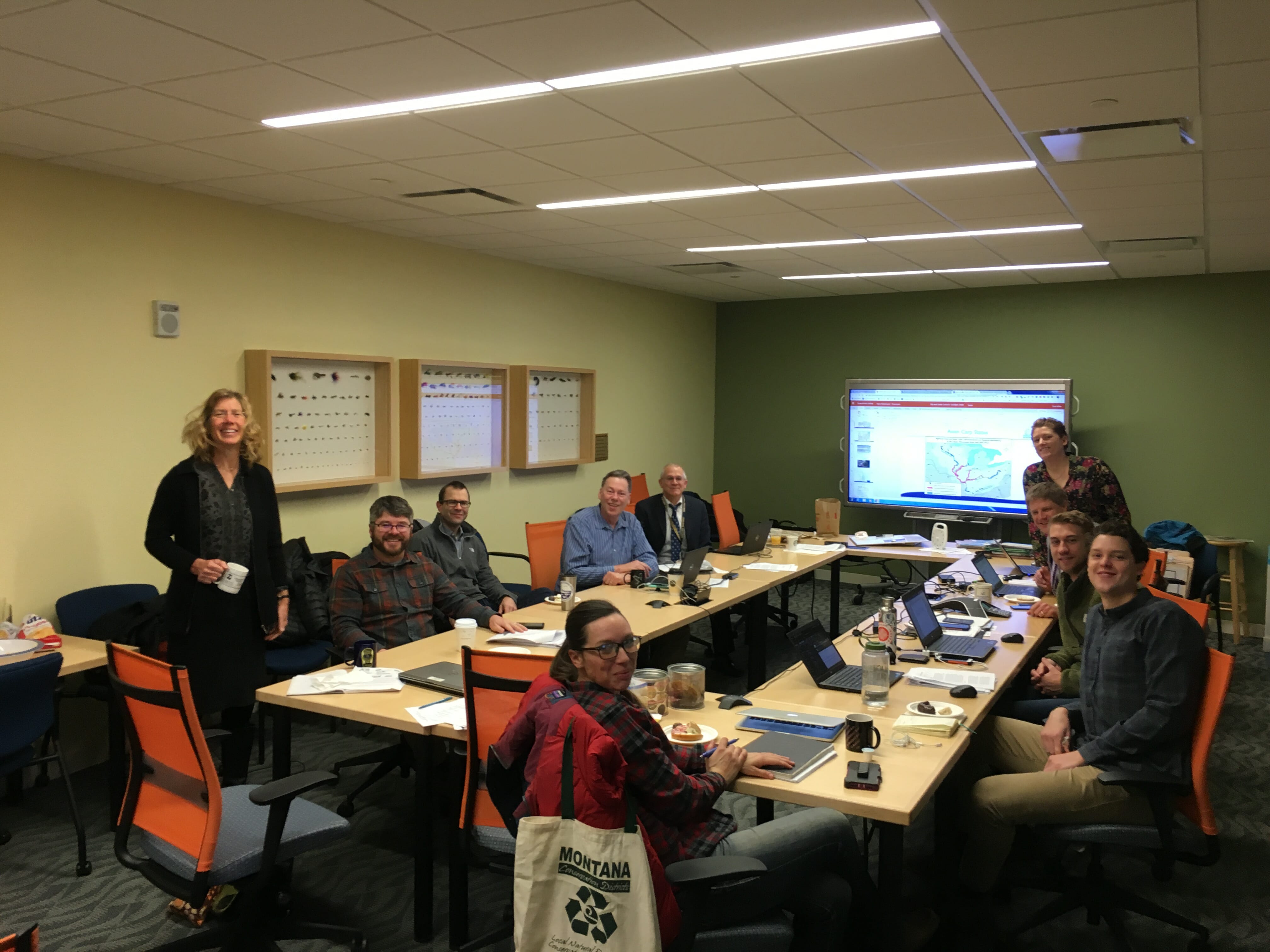TU’s government and policy staff.
By Chris Wood
Several of the bright lights in the Trout Unlimited policy world came into the intergalactic headquarters last week. Their recent accomplishments are pretty amazing.
- Dave Kinney of New Jersey helped organize efforts to pass and then fund legislation for restoration in the Delaware Basin;
- Taylor Ridderbusch of Michigan organized sportsmen and women to support continuation of funding for the Great Lakes Restoration Initiative;
- Shauna Stephenson from Montana is a master story-teller and directs our communication’s efforts across TU-dom;
- Austin Williams of Alaska was a major force in protecting 77 of the most important salmon watersheds on the Tongass National Forest;
- Corey Fisher of Montana has helped create momentum for passage of so-called Good Samaritan legislation through Congress.
The group is led by Steve Moyer and his crackerjack government affairs team of Kate Miller, Bryan Moore and Rob Catalanotto.
What makes these people so effective is their ability to connect policymakers with farmers, sportsmen and women, and others from their communities. Herein lies the secret-sauce of Trout Unlimited. When we testify before Congress, or in front of state legislatures, or local zoning boards, we represent real people, who really care, and who incidentally, vote.
Laura Ziemer is also part of the team. She has been pioneering innovative approaches to western water conservation for two decades from Montana. She played a huge role in the recent reauthorization of the Farm Bill. As you would suspect most of the Farm Bill pertains to farming. But it also contains billions of dollars in programs that incentivize private land conservation.
In the Driftless Area, for example, from 2007-2012, we used the Farm Bill to restore over 60 miles of stream. In 2017 alone, we restored more than 20 miles thanks to the Regional Conservation Partnership Program (RCPP). RCPP funding also helped to conserve water in drought-stricken areas for the benefit of ranchers and trout in the Owyhee, Malheur and Salmon Falls watersheds in Oregon, Idaho and Nevada. In the Klamath, we worked with farmers to improve irrigation efficiency in a way that keeps more water instream for threatened bull trout and redband trout.
In West Virginia, we have worked with over 300 farms to restore more than 75 miles of stream by keeping cows out of the creeks, and improving grazing management to minimize erosion and maximize agricultural productivity. Across the country in Washington, we leveraged over $5 million to modernize irrigation while also improving flows for imperiled steelhead and chinook fish populations in tributaries to the Methow and Yakima rivers.
The reauthorized Farm Bill builds on, and improves, conservation opportunities such as these. Laura and Steve and a very diverse array of partners, for example, secured billions of dollars of investment for irrigation infrastructure to improve water conservation in times of drought in a way that benefits fish and wildlife resources.
They, and their partners who included other conservation interests, the California Farm Bureau, the Montana Stockgrowers Association, and the Family Farm Alliance, also succeeded in building more flexibility in the Farm Bill so landowners and farmers can do more for fish, wildlife and water conservation.
It is well-worn to say that “Congress puts the fun in dysfunction,” but the TU policy staff and all their partners—all of TU, really—demonstrate what can happen when you bring people together to apply common sense to common problems for the common good.
Chris Wood is the president and CEO of Trout Unlimited.



